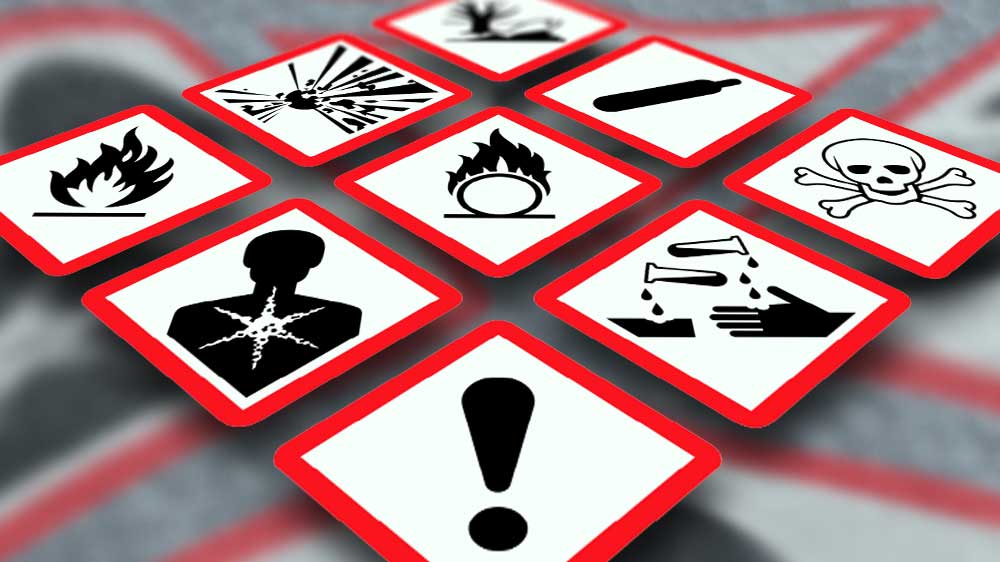On November 20, 2024, the revision of the CLP Regulation was published in the Official Journal of the European Union with Regulation (EU) 2024/2865. The revision of the CLP Regulation is part of the European Commission's "Chemicals Strategy for Sustainability". The changes will come into force on December 10, 2024. Transitional periods of 18 or 24 months will apply to most changes. The revision of the Regulation on the classification, labeling and packaging of chemicals (CLP Regulation) is intended to improve the functioning of the EU market for products containing hazardous chemicals while increasing protection for consumers, workers and the environment.
The revision of the CLP Regulation includes the following main points:
Classification
- Classification of substances that contain more than one constituent MOCs (more than one constituent substance)
- Classification based on data on the substance itself and data on its constituents
- Application of the mixture rules for the classification of CMR, ED, PBT/vPvB and PMT/vPvM also to MOCs Assessment
- Primarily via the known constituents (calculation method)
- Clarifications on the classification of complex substances (so-called MOCS). For plant extracts, including essential oils, a specific exemption applies for five years with a review of the scientific findings by the Commission.
- Right for the Commission to initiate a harmonized classification. In addition to member states and industry, the EU Commission can now also submit harmonized classification proposals, which are drawn up by ECHA or EFSA.
Exception for:
- “Substances obtained from plants or parts of plants which contain more than one constituent and which are not chemically modified substances within the meaning of Article 3(40) of Regulation (EC) No 1907/2006”
- Review after 6 years
Labeling
- Clarifications of the mandatory information for online offers. All labeling elements must be specified for online offers.
- Specifications of the labeling regulations. New requirements include clear specifications for minimum font size, font and background color, and line and letter spacing.
- Sale of chemicals via refill stations. Specific regulations on the requirements for packaging and labeling, as well as the type of offer of loose chemicals, such as detergents.
Wider use of folding labels
- Folding labels can generally be used after the revision (no longer just as an option for packaging that is too small)
- The new formatting requirements must also be met on the folding label.
- Precise specifications on which labeling content must be listed on the front, inside and back of the folding label
Voluntary digital labeling
- Digital labeling is being introduced, including technical requirements
- Some information can only be provided on the digital label
- So far, however, only "additional information pursuant to Article 25(3)" (no labeling elements that result from the classifications of the product)
- The Commission will have the authority in future to adapt the requirements for digital labeling to technical progress or the level of digital readiness of all population groups.
Classification and labeling inventory
- Improvement of the data quality of the inventory by requiring the notifier to update it. In addition, publication of the identity of the notifier.
- In addition to Resp. Sens. and CRM substances, substances with the new hazard properties (ED HH and ENV, PBT/vPvB, PMT/vPvM) are generally subject to the provisions on harmonized classification and labeling
- The Commission is given the opportunity to initiate and finance harmonized C&L dossiers
- It is possible to commission the European Chemicals Agency (ECHA) or the European Food Safety Authority (EFSA) to prepare a dossier.
- Prioritization of the evaluation of substances in groups
Transparency and predictability of proposals for harmonised classifications
- Obligation to notify ECHA of intentions
- The competent authorities will be obliged to notify ECHA of their decision on accepting or rejecting a proposal submitted to them by a manufacturer, importer or downstream user
Notifications to poison information centres
- The possibility of now also designating the agency as the point of receipt of the relevant information
- Clarifications on the obligations of traders
Disclaimer: The contents of this report have been carefully researched and compiled. However, we do not guarantee the accuracy, completeness or timeliness of the information. The use of the information is at your own risk.: Die Inhalte dieses Berichts wurden sorgfältig recherchiert und zusammengestellt. Für die Richtigkeit, Vollständigkeit und Aktualität der Angaben übernehmen wir jedoch keine Gewähr. Die Nutzung der Informationen erfolgt auf eigene Verantwortung.
